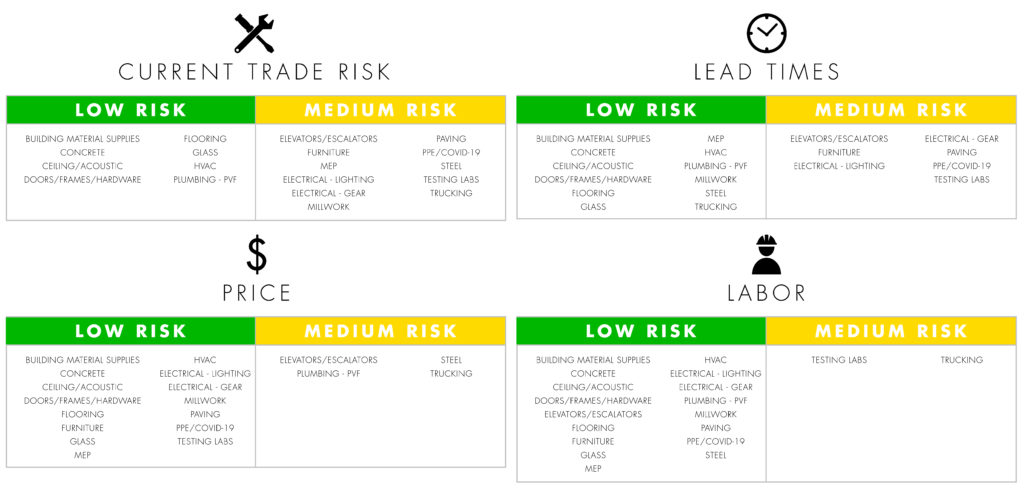Managing the Supply Chain in a Pandemic
The COVID-19 pandemic has disrupted the supply chains of 75 percent of U.S. companies in a way that is significantly different from other disruptions experienced in the past, such as natural disasters or tariffs. What makes this disruption unique? The fact that the economic shutdown is on an unprecedented scale and of unknown duration and predictability. For most, operating within this business perspective was never considered or seriously contemplated.
“Savvy construction managers, general contractors or other service providers in the construction industry often have a dedicated person or team to lead and manage their supply chain,” says Leopardo Director of Procurement Todd Grunert. “This leadership has the responsibility to proactively address and manage supply chain risk through open communications with suppliers and trade sub-contractors. By gaining and maintaining this transparency, they improve supply chain resiliency to reduce the impact of any unplanned or unforeseen disruptions.”
In response, Leopardo is working with trade partners to understand and mitigate risks in their supply chain. This involves considering geographic location, lead time, labor, pricing and liquidity impacts. Gaining visibility to these impacts through regular communications and developing risk mitigation strategies where necessary is critical to the health of Leopardo’s own supply chain both now and in the future.

Supply chain risk has been a major blind spot for many industries, construction included. The following shows data from a recent Ardent Partners webinar:
- Only 34% of all businesses have an active supply risk program
- Only 21% of procurement teams have a comprehensive supply risk program targeting strategic suppliers
- Only 9% of procurement teams were focused on improving their supply risk management capabilities
Furthermore, the supplier side of the business is facing risks to their business survival. In a recent article from Beroe on the impact of COVID-19 on supplier risk, although 60% of suppliers remain at an unchanged level of risk, the remainder are seeing an increased risk:
- 29% of suppliers moving from low risk to medium-risk levels
- 8% of suppliers moving from medium risk to high-risk levels
- 3% of suppliers moving from low risk directly to high-risk levels
Another concern is a looming cash crunch that will likely negatively impact the financing and funding of current and future projects/jobs. To what degree is unknown, but there are already two key indicators in place predicting at least some level of pain:
- Both suppliers and subcontractors have been pushed/asked to re-bid on jobs that were already won
- Multiple reports of financing drying up on the funding of projects/jobs which will be felt in many of the trades in Q3
A general lack of proper planning by many within the construction industry’s supply and subcontractor businesses mixed with global disruptions and pending or ongoing financial hardships is certainly not an ideal place to be.
Getting in front of these challenges, gaining transparency in the supply chain and addressing concerns proactively will help companies get through the immediate storm and any bad weather in the future.

